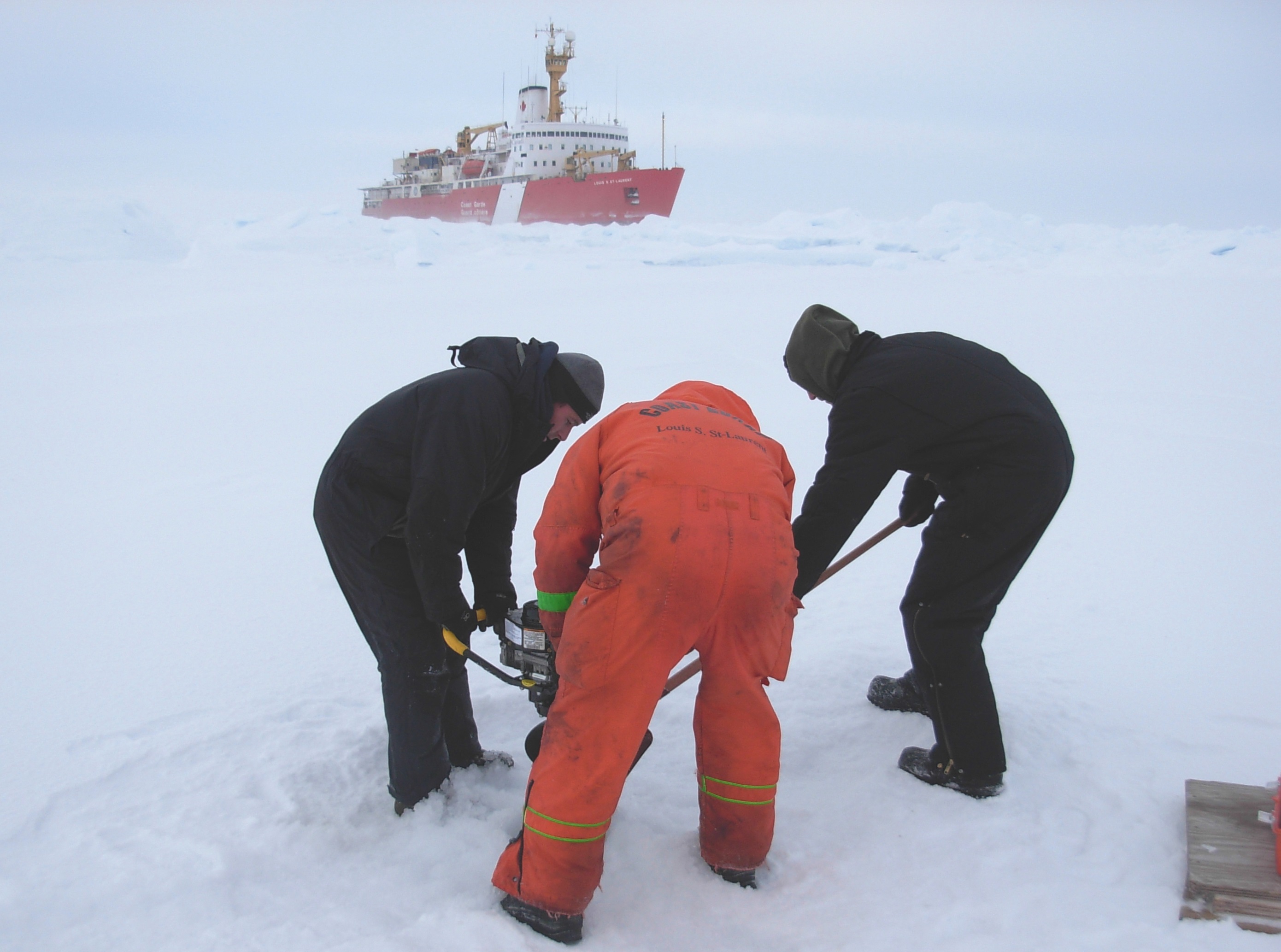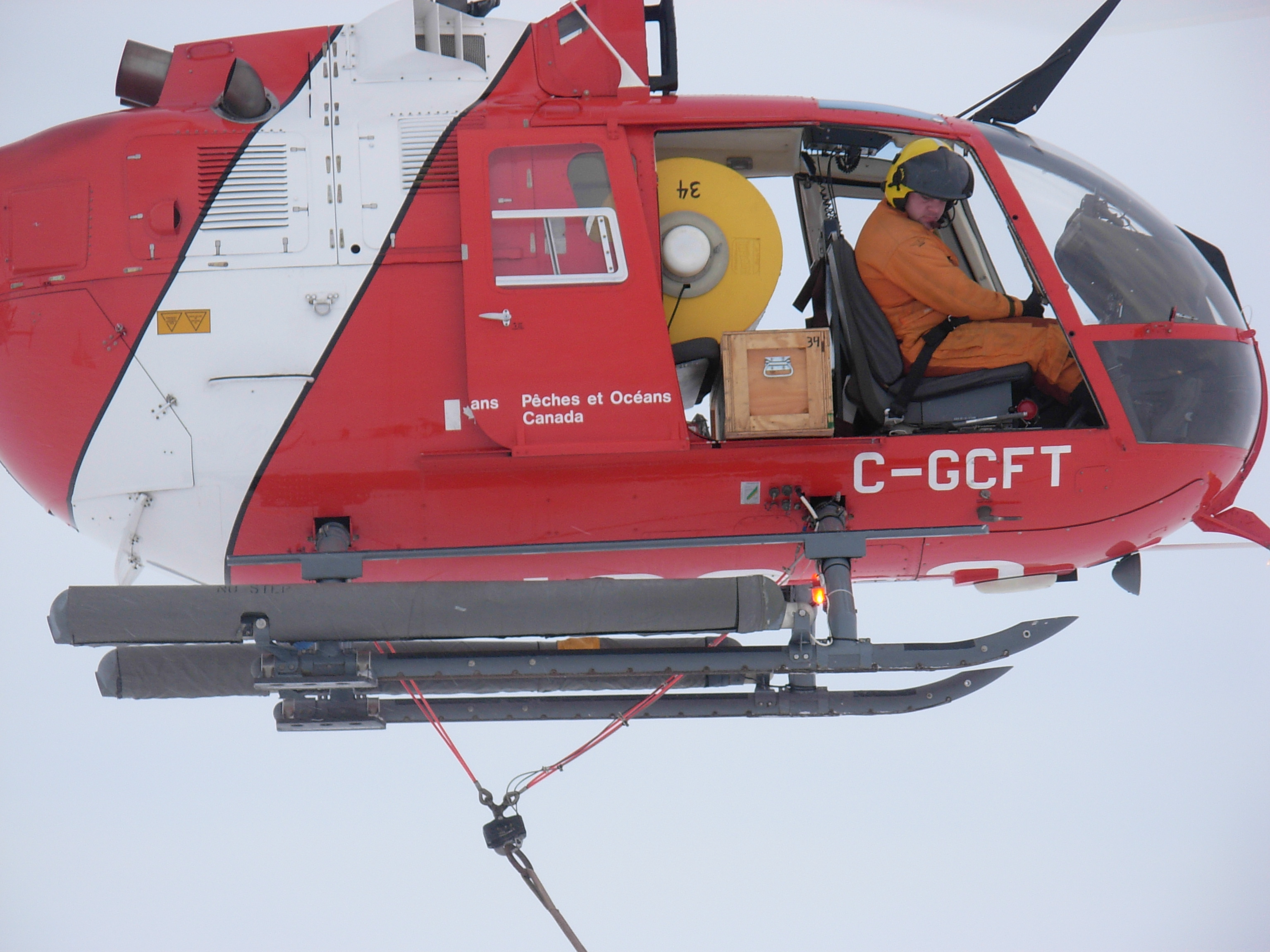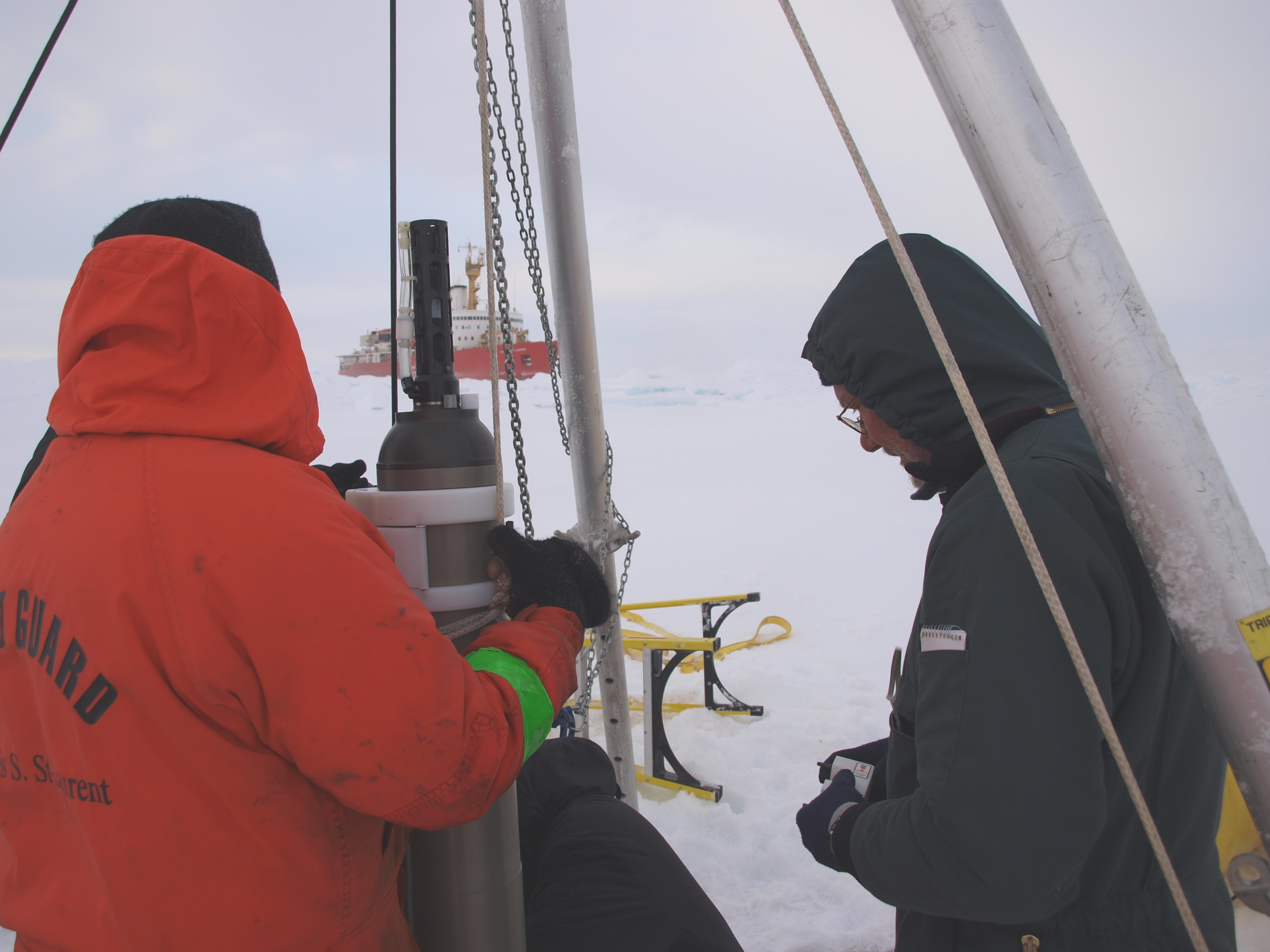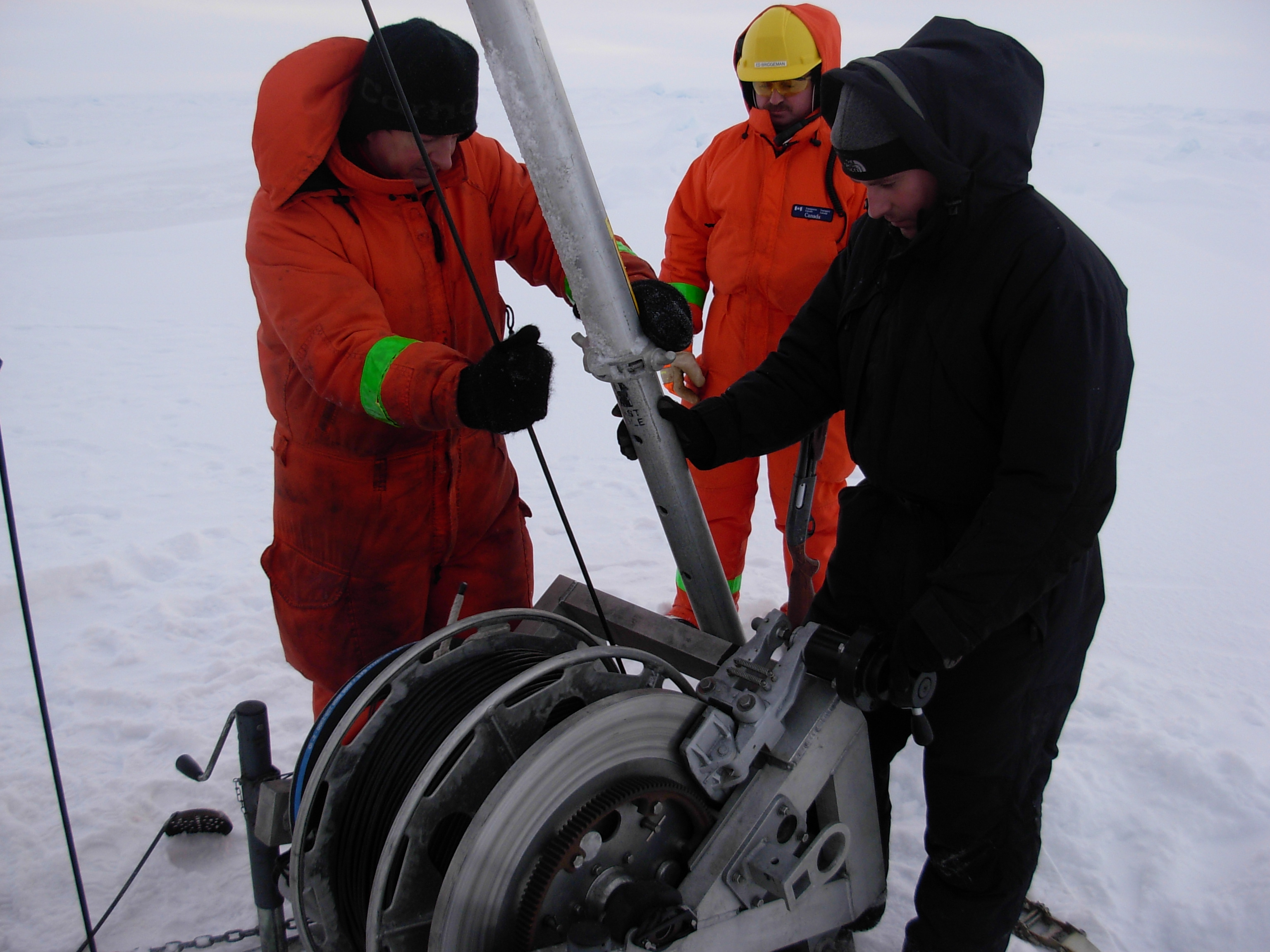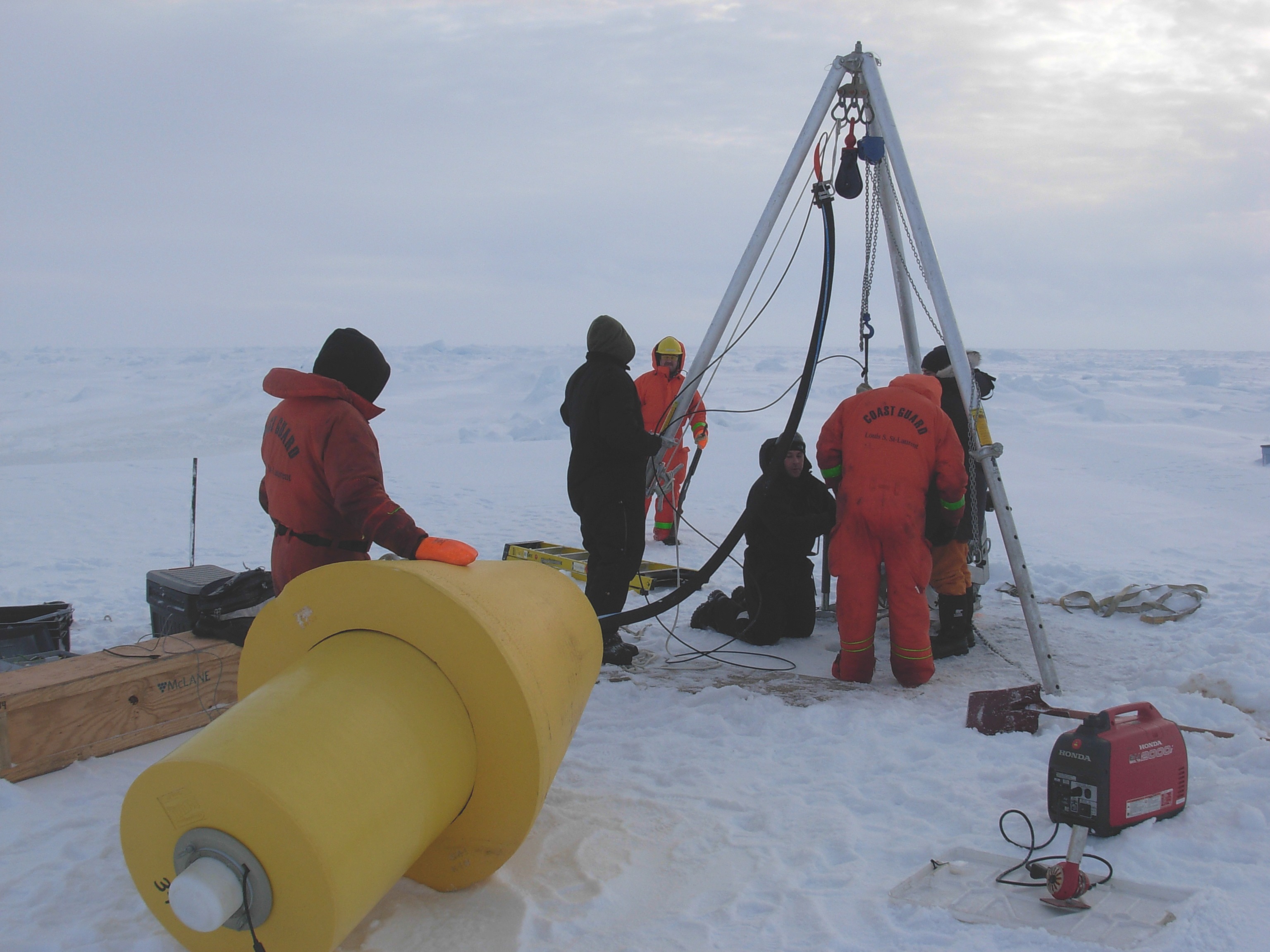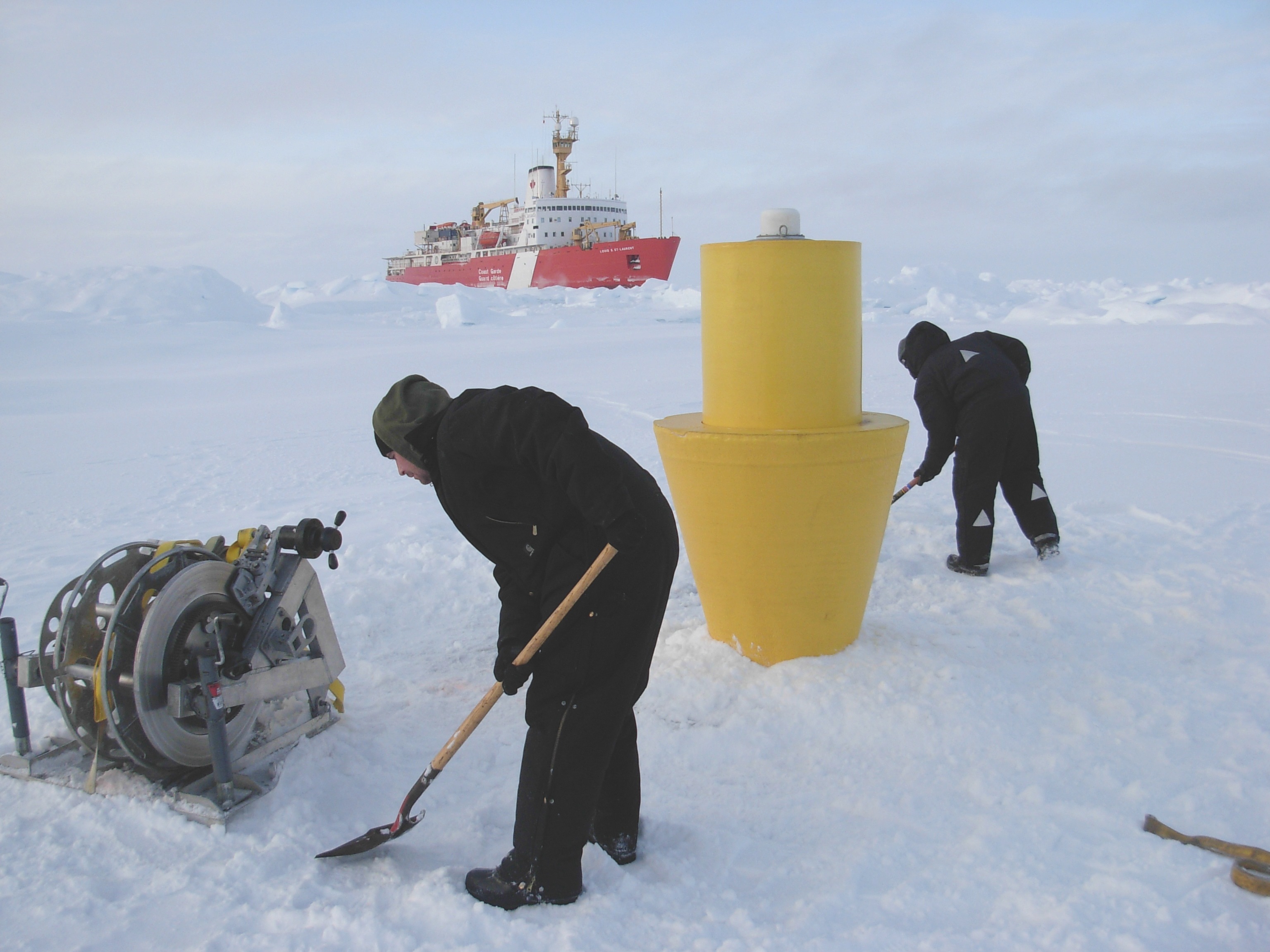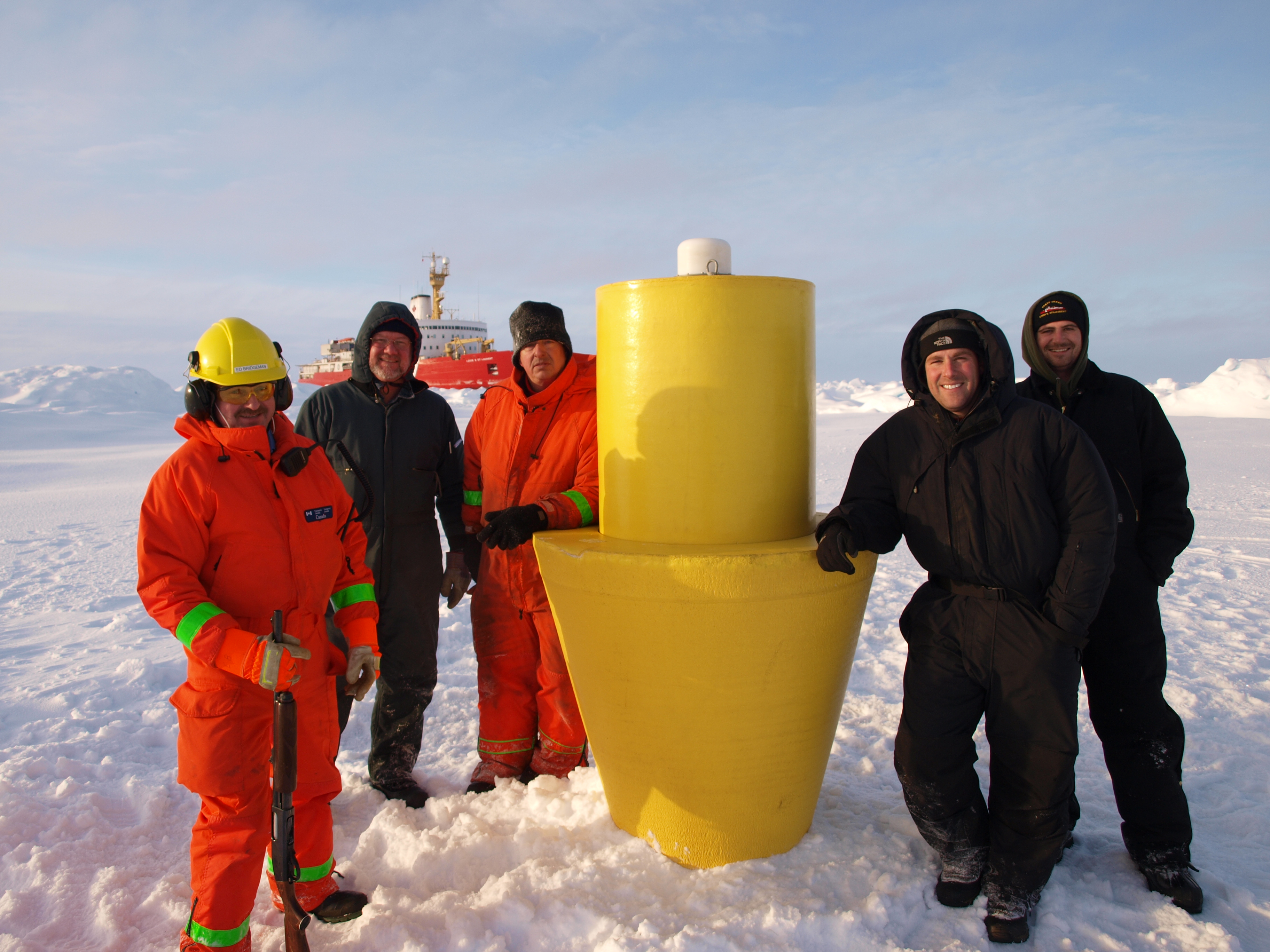ITP34 Deployment Operations
It was the second week of October, the daylight hours were decreasing, and while the air temperature was only about -5°C, the wind chill was much less during the deployment of ITP 34, the last of the JOIS 2009 cruise. The morning reconnaissance by helicopter revealed that the ice conditions in the area appeared to largely consist of a rubble field, obscured by a light coating of wind-blown snow, hampering floe selection. However, a relatively small level floe of 2.8 m thickness was identified on the second landing and selected for the buoy site.
Back on the ship, the instruments and deployment apparatus were staged, and the operations began in the afternoon. After three flights of passengers and a slingload of gear, augering of the icefloe immediately began, while another group of scientists surveyed the icefloe. As there was no shelter from the frigid wind, no time was wasted completing the operations. Within an hour, the profiler was lowered into the water, 40 minutes later the buoy was installed, and everyone was safely back onboard the warm ship another 40 minutes after that.
